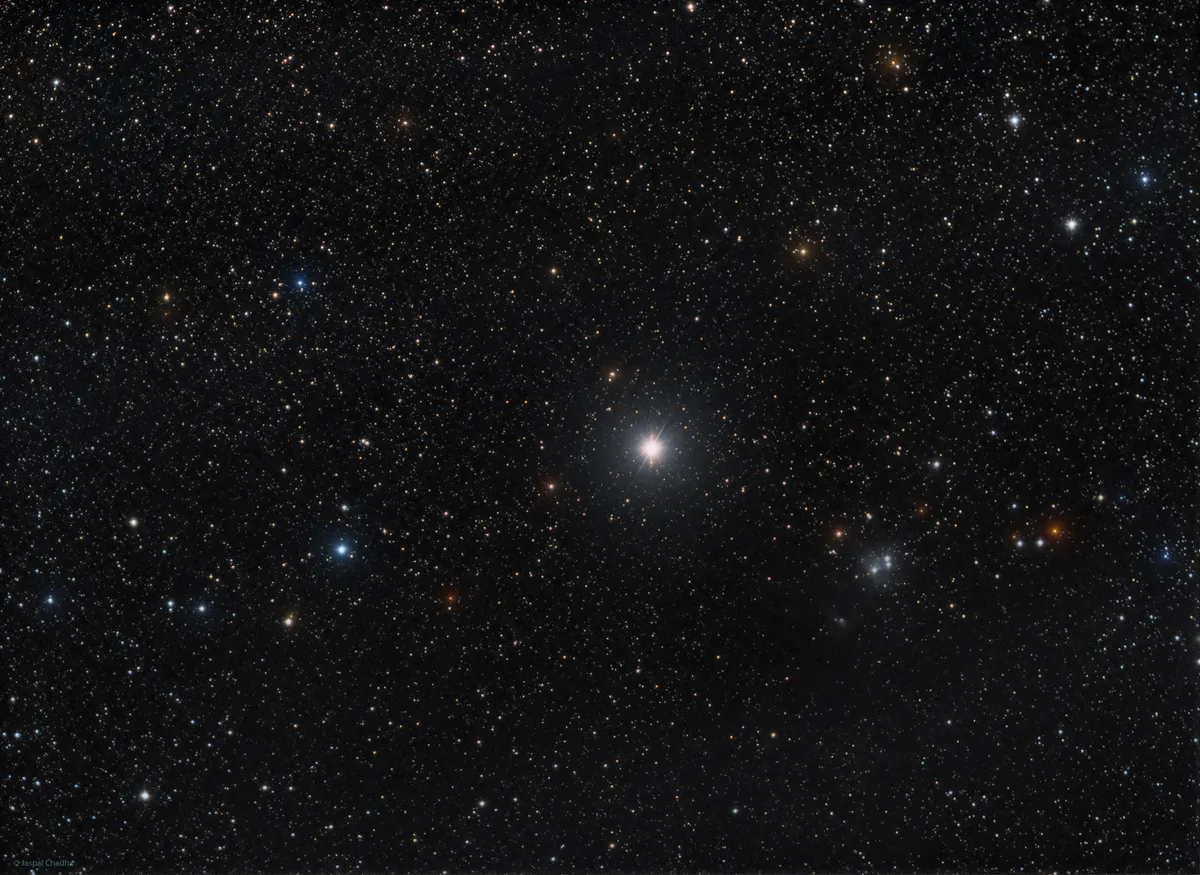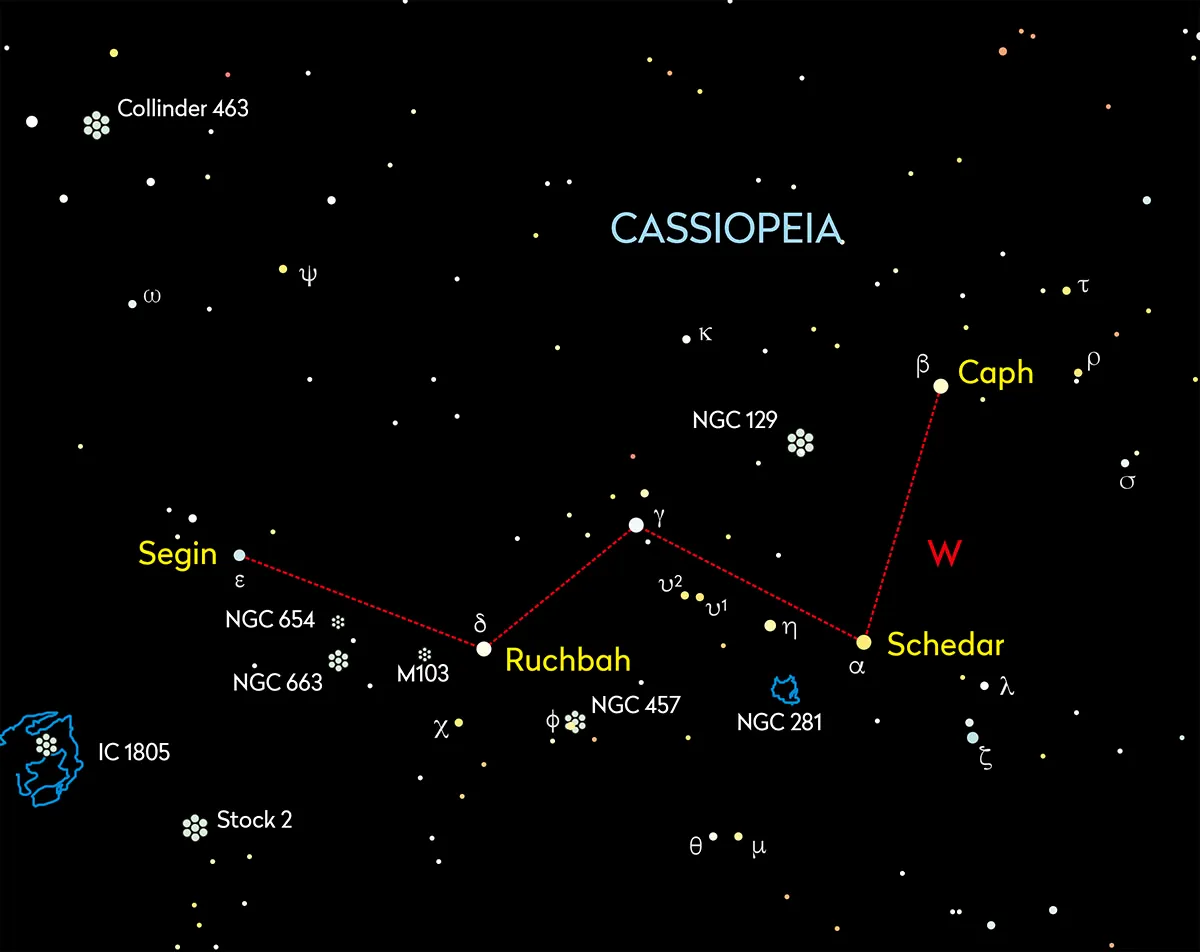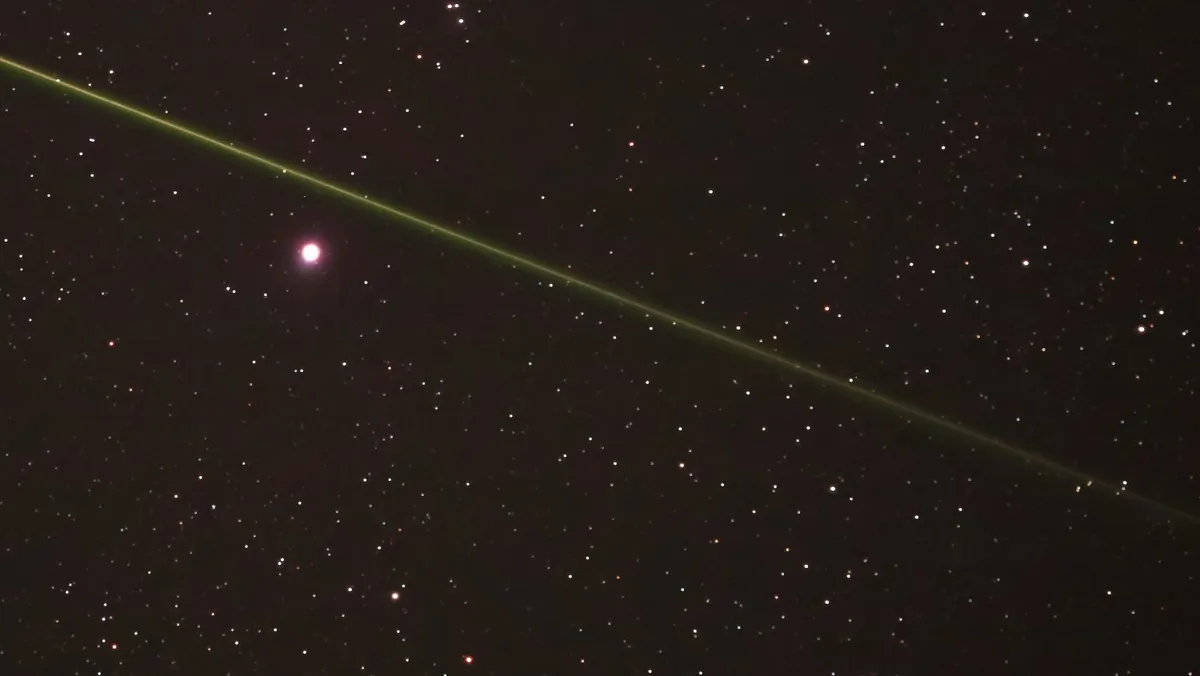Star Caph (Beta (β) Cassiopeiae) marks the western end, the right-hand edge of the ‘W’ of the constellation Cassiopeia.
Few constellations are as easy to recognise as the ‘W’ of Cassiopeia.
This distinctive circumpolar pattern is as familiar as the Plough. The ‘W’ is formed from five medium-brightness stars.

Why it's called Caph
Caph gets its name from ‘al-Kaff al-Khadib’, meaning ‘the stained hand’, as the pre-Islamic Arabic depiction of the five stars formed an outstretched hand.
The phrase was shortened and came to refer to just Beta Cassiopeiae.
It’s a Delta Scuti variable star, ranging from mag. +2.25 to mag. +2.31, with a spectral class of F2 III, indicating it’s a yellow-white giant.

Caph is 54.7 lightyears away. It has a mass nearly twice that of our own Sun and is 3.8 times larger and 21 times more luminous.
It rotates at a velocity of 72.4km/s. At this speed, Caph must be distorted into an oblate spheroid with an equatorial radius 24% larger than its polar radius.

Caph and the equinoxes
If you draw a line from Caph through Alpheratz (Alpha (α) Andromedae) and extend it for the same distance again, the position in the sky you arrive at is the vernal equinox.
This is the point where the Sun’s apparent motion takes it from the southern to northern celestial hemisphere on the first day of astronomical spring.

Together with Algenib (Gamma (γ) Pegasi), the three stars make the ‘Three Guides’ that mark a great circle in the sky known as the equinoctial colure.
If you extend the line, eventually it passes through the position of the autumn equinox, which currently lies in Virgo.
If you have any images of Caph, share them with us by emailing contactus@skyatnightmagazine.com.
This guide appeared in the September 2025 issue of BBC Sky at Night Magazine

